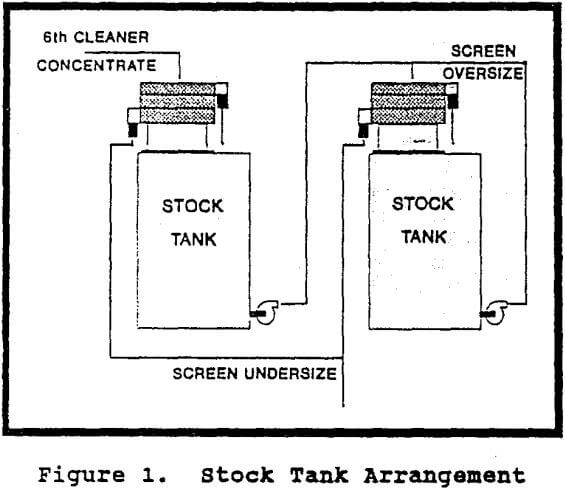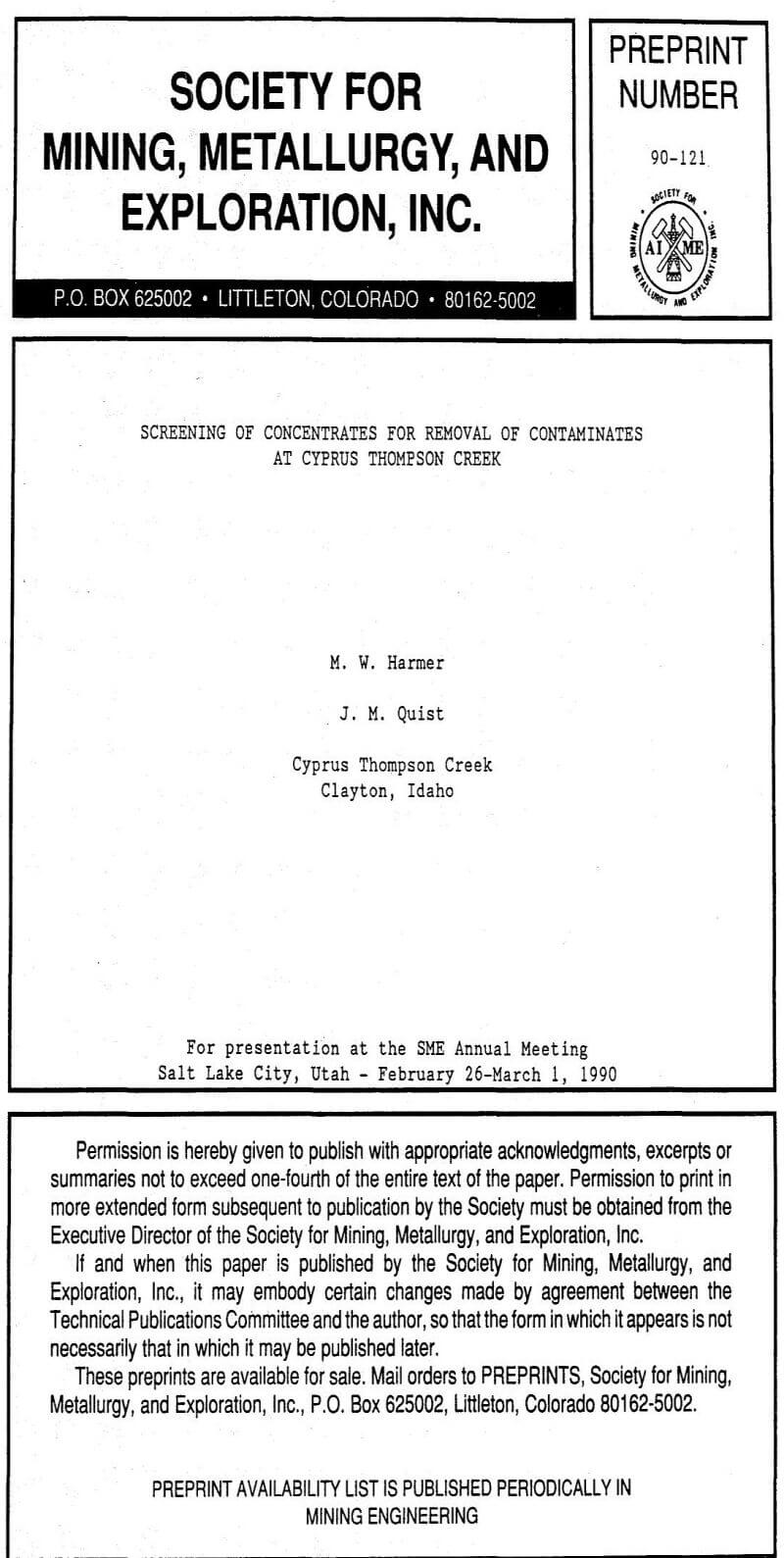
This was a unique idea; to use a size separation device in a mineral separation. As metallurgists, we were taught in school to use any physical property difference available to make the mineral separation. The idea was a departure from conventional processing flowsheets employed by the majority of mineral processing plants.
Plant testing began with a used, circular, oscillating, 1.2m (4ft) diameter screen. The device was mounted on one of our 38m³ (10,000 gal) stock tanks, and concentrate was pumped to the screen with both overflow and underflow reporting to the stock tank. These tests indicated that a very dilute feed density (10% solids) was required with low feed rates to even come close to an acceptable product. Multiple passes were going to be required to wash enough of the fine, contaminate laden material through the screen.
Another used circular screen was found and mounted on a 2nd stock tank. The 1st screen overflow was screened again on the 2nd screen and this oversize went to the 2nd stock tank (see figure 1) . When the 2nd stock tank was full, the oversize was recirculated through the screen until enough of the high Pb, Cu, & Fe fines had been washed out to produce a leached equivalent product. Approximately three passes across a 200 mesh screen were required to produce a concentrate that was of acceptable quality. We were elated to have had produced truckload quantities of a low Fe concentrate. Screen capacity however, was less than 5% of the mill’s production.

We sent samples to Derrick Manufacturing of Buffalo New York for tests on their machines. These were large rectangular screens that vibrated at a high frequency and low amplitude. They were designed for wet screening applications and had the ability to perform multiple passes of the screen oversize on a single machine (see figure 2) . A pilot plant unit was acquired from the manufacturer and tests were performed at the plant site. Pilot plant goals were to determine the proper parameters to design a full capacity plant installation. Parameters investigated were: screen mesh size, feed rate, feed pulp density, wash water rate, number of passes required, angle of the screen, and tendency toward blinding.
Three weeks of tests determined that a 270 mesh cloth was required. Feed rate and feed pulp density were primary variables in determining the screen cloth area. Wash water rate was important in that the more wash water used, the more contaminates were washed through the screen. Three passes seemed to be sufficient at a reasonable feed rate and pulp density. Angle of the screen was not critical. Plain cloth would blind off in less than 4 hours and had to be washed every hour. A sandwich type cloth was then tested that worked very well. The two cloths of the sandwich would beat together and prevent the near size particles from blinding the cloth.
The plant was designed for three screening machines to handle the entire plant concentrate stream plus a spare. As an additional margin of safety, four pass screens were ordered instead of the three pass screen that was pilot tested. A stock tank was installed between the final concentrate cleaning cells and the screens to act as surge capacity to allow the operation of the screens at the optimum feed rate and pulp density.
